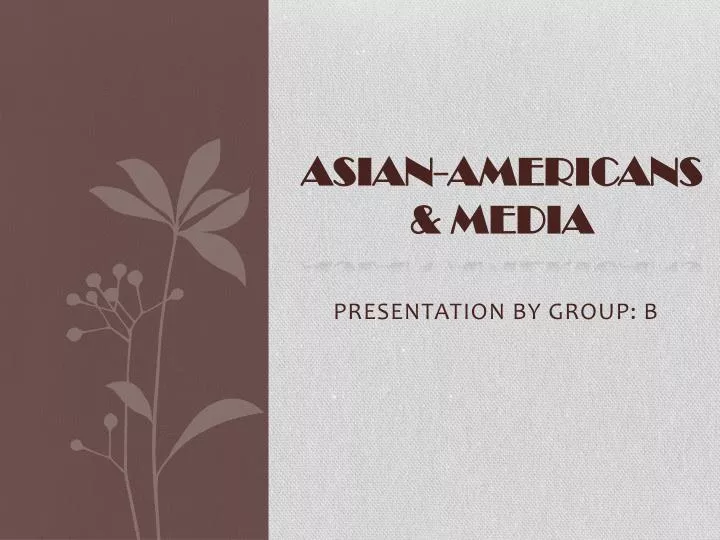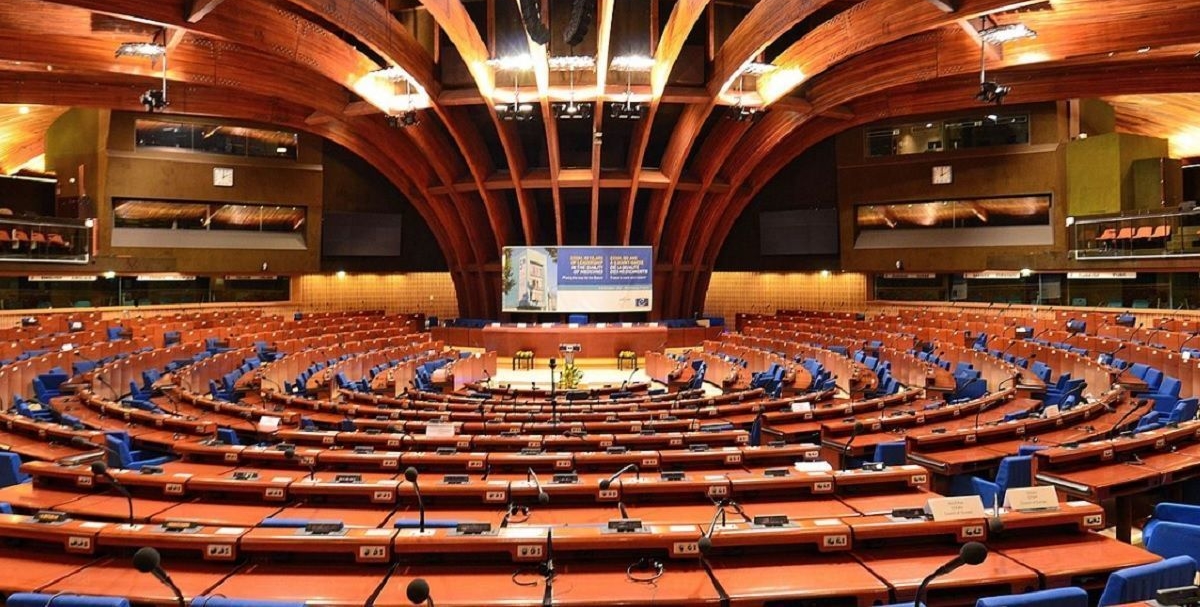Beyond Representation: Authentic Storytelling For Asian And Asian Americans In Media

Table of Contents
The Limitations of Tokenistic Representation
Superficial representation, or "checking the box," is rife in media. It often manifests as tokenistic inclusion, where Asian characters are present but lack depth, complexity, or agency. This perpetuates harmful stereotypes that damage the perception and self-image of Asian and Asian American communities.
Common stereotypical tropes include:
- The Model Minority Myth: The portrayal of Asians as perpetually successful, hardworking, and obedient, often overshadowing individual struggles and complexities. Think of the overachieving student character who lacks a personal life or struggles with mental health.
- The Exotic Other: The hyper-sexualization or fetishization of Asian individuals, reducing them to objects of desire rather than fully realized human beings. This often manifests in the portrayal of submissive, alluring women or mysteriously wise martial arts experts.
- The Perpetual Foreigner: The assumption that Asian individuals are always outsiders, regardless of their citizenship or length of residence in their home country. This is perpetuated by the frequent use of broken English or accent jokes.
Examples of these tropes abound in popular media:
- The "magical" Asian character who possesses otherworldly powers but lacks a developed personality.
- The hyper-sexualized Asian woman, reduced to a mere object of desire for the male protagonist.
- The sidekick Asian character who serves only to support the main white character, without a story of their own.
These stereotypical portrayals not only reinforce harmful prejudices but also limit the opportunities and perspectives of Asian and Asian American creatives.
Elements of Authentic Storytelling for Asian and Asian American Narratives
Authentic storytelling requires a multifaceted approach that goes beyond surface-level representation. It demands:
-
Nuanced Characters: Asian and Asian American characters need to be portrayed as complex individuals with diverse personalities, motivations, flaws, and triumphs. They should be more than just a single defining characteristic, transcending the simplistic stereotypes mentioned above.
-
Complex Narratives: The narratives themselves should move beyond simplistic plots and explore multifaceted storylines that reflect the real-life challenges and triumphs of Asian and Asian American communities. This includes depicting struggles with racism, cultural clashes, family dynamics, and societal pressures.
-
Accurate Cultural Representation: Authentic storytelling necessitates a respectful and accurate portrayal of Asian cultures, traditions, and languages. This means avoiding cultural appropriation and ensuring that cultural practices are depicted with sensitivity and understanding. Consultants from the relevant cultures are essential.
Examples of successful authentic storytelling include:
- "Parasite": A South Korean film that explores class inequality and societal tensions through a compelling and complex narrative.
- "Crazy Rich Asians": A romantic comedy that portrays the diversity and wealth within the Asian community, while also highlighting generational conflicts.
- "Minari": A film that portrays the challenges and triumphs of a Korean-American family pursuing the American dream.
These examples succeed because of the involvement of diverse creative teams—writers, directors, and actors—who bring authentic perspectives and lived experiences to the project.
Amplifying Diverse Asian and Asian American Voices
Authentic storytelling necessitates amplifying the voices of underrepresented groups within the vast Asian diaspora. This requires acknowledging intersectionality, recognizing how race intersects with other identities like gender, class, sexuality, and religion. It is critical to understand that the experiences of a Chinese-American woman are not the same as a Korean-American man, or a South Asian LGBTQ+ individual.
This means:
- Highlighting unique experiences: Giving a platform to narratives that reflect the diverse experiences of individuals within the Asian diaspora.
- Supporting independent filmmakers and artists: Creating opportunities for authentic storytelling beyond the constraints of mainstream media. Many impactful stories are found in independent films and web series.
Examples of independent films showcasing unique perspectives include:
- Films focusing on the experiences of Southeast Asian refugees.
- Documentaries exploring the history and impact of Asian immigration in the US.
- Short films highlighting the lived experiences of LGBTQ+ individuals within the Asian community.
Mentorship programs and initiatives are crucial for supporting emerging Asian and Asian American creators and providing them with the necessary resources and platforms to share their stories.
The Impact of Authentic Storytelling on Audiences
Authentic storytelling transcends mere entertainment; it fosters empathy, challenges stereotypes, and promotes a more inclusive media landscape. By exposing audiences to diverse narratives and lived experiences, these stories:
- Promote empathy and understanding: Authentic stories bridge cultural divides and foster a deeper understanding of different cultures and perspectives.
- Challenge stereotypes and biases: Narratives that challenge existing stereotypes can help dismantle prejudice and promote inclusivity.
- Create a more inclusive media landscape: Authentic storytelling leads to a more accurate and representative portrayal of Asian and Asian American communities.
The impact of authentic storytelling is evident in audience responses:
- Increased positive representation leads to a rise in self-esteem and pride within the Asian community.
- Exposure to diverse experiences fosters empathy and reduces prejudice in non-Asian audiences.
- Authentic storytelling can spur critical discussions about diversity and representation in the media.
The media has a powerful role in shaping societal attitudes, and authentic storytelling is crucial for creating positive social change.
The Future of Authentic Storytelling for Asian and Asian Americans in Media
Moving beyond simple representation to authentic storytelling is paramount. It requires a conscious and concerted effort from the media industry to center the voices and perspectives of Asian and Asian American creators. We need to demand and support nuanced, complex, and culturally accurate portrayals of Asian and Asian American lives.
Call to Action: Demand authentic Asian American storytelling! Seek out and support independent films and shows that prioritize authentic representation of Asian stories. Write to networks and studios, advocating for better representation and more diverse creative teams. Support initiatives that promote diversity and inclusion in the media. Only through collective action can we create a media landscape that truly reflects the rich diversity of the Asian and Asian American experience. Let's work together to ensure the future of media embraces authentic Asian American storytelling.

Featured Posts
-
 Manfred Anticipates Massive Bristol Motor Speedway Crowd
May 12, 2025
Manfred Anticipates Massive Bristol Motor Speedway Crowd
May 12, 2025 -
 Ukrayina Ta Mirni Peregovori Pozitsiya Dzhonsona Schodo Planu Trampa
May 12, 2025
Ukrayina Ta Mirni Peregovori Pozitsiya Dzhonsona Schodo Planu Trampa
May 12, 2025 -
 The Speedway Classic A Conversation With Rob Manfred
May 12, 2025
The Speedway Classic A Conversation With Rob Manfred
May 12, 2025 -
 Tam Krwz Ke Sath Ayk Mdah Ka Hyran Kn Tjrbh
May 12, 2025
Tam Krwz Ke Sath Ayk Mdah Ka Hyran Kn Tjrbh
May 12, 2025 -
 Rochelle Humes Debuts Stunning New Hairstyle At Roksanda Show
May 12, 2025
Rochelle Humes Debuts Stunning New Hairstyle At Roksanda Show
May 12, 2025
Latest Posts
-
 Jessica Simpson And Eric Johnsons Recent Outing Fuels Speculation
May 12, 2025
Jessica Simpson And Eric Johnsons Recent Outing Fuels Speculation
May 12, 2025 -
 The Emotional Toll Of Divorce Jessica Simpson Shares Her Experience
May 12, 2025
The Emotional Toll Of Divorce Jessica Simpson Shares Her Experience
May 12, 2025 -
 Ill House U A Deep Dive Into Neal Mc Clellands Collaboration With Andrea Love
May 12, 2025
Ill House U A Deep Dive Into Neal Mc Clellands Collaboration With Andrea Love
May 12, 2025 -
 Jessica Simpson And Eric Johnson Spotted Together Amidst Split Rumors
May 12, 2025
Jessica Simpson And Eric Johnson Spotted Together Amidst Split Rumors
May 12, 2025 -
 Jessica Simpson On Marriage And Loss A Look Back
May 12, 2025
Jessica Simpson On Marriage And Loss A Look Back
May 12, 2025
